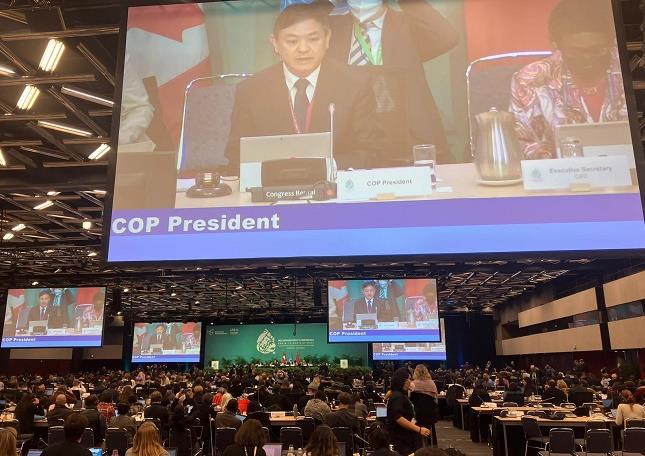Negotiators from the 196 parties to the UN Convention on Biological Diversity (CBD) on Monday, December 19, 2022, at the 15th meeting of the Conference of the Parties (COP15) to the UN CBD in Montreal, Canada, rallied to finalise an ambitious, global biodiversity framework inclusive of the 30×30 target and Indigenous Peoples’ rights and recognition, while addressing the cavernous funding gap for biodiversity protection and conservation.

In a reaction, Brian O’Donnell, Director of the Campaign for Nature, said: “In 2019, scientists sounded the alarm that biodiversity is declining at rates unprecedented in human history and urged global leaders to boldly act. After working through years of a global pandemic and economic and social upheaval, today in Montreal the international community has come together for a landmark global biodiversity agreement that provides some hope that the crisis facing nature is starting to get the attention it deserves.
“Moose, sea turtles, parrots, rhinos, rare ferns and ancient trees, butterflies, rays, and dolphins are among the million species that will see a significantly improved outlook for their survival and abundance if this agreement is implemented effectively. Habitat loss and overfishing have led to biodiversity loss, and this agreement will safeguard key habitat and protect marine life.
“At the heart of the agreement is a target to protect and conserve at least 30% of the world’s lands and oceans by 2030. The ‘30×30’ target marks the largest land and ocean conservation commitment in history. It will have major positive impacts for wildlife, for addressing climate change, and for securing the services that nature provides to people, including clean water and pollination for crops. Ocean conservation, which has historically lagged land conservation, will now be an equal priority.
“The Kunming – Montreal agreement also has the potential to usher in a new paradigm for conservation, one in which Indigenous Peoples and local communities’ rights are upheld and where they are recognised for the leadership they have provided. We are eager to work with Indigenous Peoples and local communities to centre the achievement of this target around their efforts.
“As the world now turns to implement this target, we must remember that achieving 30×30 is more than just reaching a number. Through this global target, the world has committed to increase conservation in the right places and in the right ways. Now the important work begins to ensure that at least 30% of the ocean and at least 30% of the land is effectively conserved, that the most important areas for biodiversity are prioritised, and that the systems of conserved areas are well connected and representative of the world’s diverse ecosystems. We must hold governments to account to fulfil their commitments to increase funding and reform harmful subsidies.
“To fully achieve the ambition of this target, it will take everyone – from governments to civil society to Indigenous Peoples and local communities to scientists. Together we can ensure that all of the key qualitative aspects of this target are met, and the intended conservation outcomes are secured.
“We are grateful for the leadership of the COP President China, COP Host Canada, the High Ambition Coalition for Nature and People and all of the parties to the Convention on Biological Diversity who made this historic agreement possible.”
